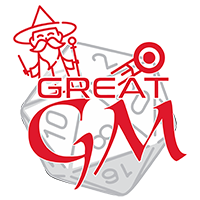Dunark ((Dahn-ark))
A type of bovine-like species with one of the quickest life cycles and gestation periods that make it invaluable to the Timaran Empire in feeding its large flight of dragons.
Basic Information
Anatomy
Physiology: All members of the species walk on four limbs, have a long singular tail, are barrel-chested. Females of the species have udders for producing milk to feed their young. Males develop large horns to protect their herds.
Skeleton: It is similar to other bovines having a large skull with multiple molars to chew, and rechew food. They have a long C-shaped spine with a large chest cavity near the center of the chest, and thick hind bones to support themselves. Males have thick forelimbs as well as sharp bone protrusions that curl towards their bodies above their front hooves used for protecting themselves and their herd.
Muscle: Their muscles are very similar to other bovines with slight variation in males and females. Females have denser muscles in their hind legs to help with childbirth, while males have denser muscles in their forelimbs to assist in combat.
Organs: It has all the same organs as all other bovines do.
Genetics and Reproduction
At the height of their mating period females and males perform a mating ritual to attract mates. Males will engage in fights to display their prowess in front of the females. The females themselves will trot around and with their tails often wave them to try and display their engorged organs to prospective males. After a mate is chosen the male will lift itself onto its hind legs and mount a female to start procreation.
After the male Dunark is finished and is successful in impregnating the female Dunark the female will seclude herself in the center of the herd among the other females who also found success in their mating ritual. As they travel they will eat nearly twice as much as they did before becoming pregnant.
The pregnancy lasts for about 7 months after which the female Dunark gives birth sometime after the 7th-month mark but could be pregnant for an additional month. After giving birth the lifecycle of a Dunark begins anew.
Growth Rate & Stages
Newborn: After a mature Dunark has been pregnant for 7 months it gives birth to a newborn Dunark. After about 4-6 days the newborn is able to stand up and move. It takes about 2 days before a newborn starts to drink its mother's milk and will continue to do so for 3 weeks before shifting to eating solid food like grasses, nuts, and berries.
5 Month Old: After about 5 months a Dunark will start to exhibit puberty and develop into a mature Dunark. Females start to develop enlarge udders, and males start to grow their horns and forelimb bone claws.
Yearling: After reaching a year most Dunarks are near maturity with both males and females being near full development. Males start to exhibit more aggressive behavior and need to be separated from other males, and females start to store additional body fat in preparation for childbirth.
Mature Dunark: After an additional 3 months Dunarks are fully matured and start to become sexually active. Dunarks go into heat about once a month and usually last for a week. In large herds, this cycle becomes syncs between all the males and females, but in smaller herds can happen at almost anytime during the month.
Dietary Needs and Habits
Dunarks are herbivores and grazers. They eat tall standing grasses such as grain, and low grasses as well. They are best suited for grasslands and other large flat lowland areas. They travel over vast distances to look for suitable areas to graze and are known to leave whole trails behind them from their eating. In dire times they are able to use the stored fat on their bodies to keep them alive until they find suitable grazing lands.
They will sometimes encounter other herds in which case the males will often battle the other males for grazing rights. The strongest males will force the other herd to retreat allowing their own herd to graze instead.
Additional Information
Domestication
The wild Dunark have been domesticated over many thousands of years ago but some still roam the Halcyon Plains, High lands, Low Lands, and the other surrounding kingdoms. The ones domesticated have been bred to be much larger to supply more meat and provide milk in larger yields. This has become extremely important in the last 300 years to feed all the dragons and the army of Timara.
Uses, Products & Exploitation
Used for meat, leather, milk, and beasts of burden. Used mainly to feed the dragon flights of the Timaran Empire.
Geographic Origin and Distribution
Grasslands, Plains, Hill lands, low lands.
Lifespan
22-36 years
Average Height
5 ft, 8in. / 1.68 meters
Average Weight
1,500 lb. / 680.38 Kg.
Average Length
8 ft. / 2.44 meters
Body Tint, Colouring and Marking
Brown, black, white, and grey skin with females having a mix of two colors.
Geographic Distribution
Remove these ads. Join the Worldbuilders Guild









Comments